Traditionally in Africa many small, often ambulatory businesses have used hand-painted, hand-constructed signs to advertise their business. The business person may have an actual store front but more often just sets up shop along any street and moves around town from day to day as the business prospects appear better in different parts of town. In the case of people who cut hair, men’s or women’s, this is a very common option in all parts of Africa. To support those people in business there are very accomplished artists who make their living as commercial artists, painting signs for any business, itinerant or in a fixed location. This sign was painted by hand by a commercial artist for a woman who not only styles women’s hair but also offers cell phone service. As cell phones have become more widespread throughout Africa, more and more people in business for themselves use their cell phones to offer phone service to the public. Although everyone wants his own phone not everyone can afford his or her own; the majority of the people still do not own a phone. The availability of land lines has always been limited. In addition to all the people who have set up a business offering only phone service to the public using their own cell phone other businesses are taking advantage of the demand thereby created to offer that service along with their regular business. Beauty salons and barbershops are an increasingly common type of business which offer phone service too. This sign measures 48 x 32″ (122 x 81 cm), without the legs. This sign is one half of a sandwich sign which we have separated into its two sides. The two sides were connected at the top with a hinge so it would stand alone when opened and would be visible from both sides. The other side is available for purchase on this site as well, item #11802. This side features, in red, the word “STOP” then in much larger red letters, the word “PHONE” with an arrow on the far right pointing left to the word “PHONE”. This arrow would have been pointing at the business, visible from both sides, pointing in the same direction. The majority of the area of the sign is divided into 4 quarters, each with a woman’s head on a solid color background, two each in light blue and pink, with a white vertical band in the center, dividing the photos into two vertical halves. Each woman’s head has a different hair style and each woman is wearing a different outfit. The woman in the upper left quadrant has white decorations (it’s not clear if they are beads or shells) in her hair arranged in a horizontal straight line. The woman in the lower left has a pony tail hairstyle. All of the women’s hairstyles show a lot of detail, a lot of texture, as African hairstyles typically do. Each woman except the one on the lower right is wearing an earring, each different. The wooden sandwich frame to which the sign is attached is painted blue; the blue legs, extending from that frame, are still present but could be removed easily. The sign could be removed from the frame or be kept on it. The sign is painted on a thin piece of wood the top veneer of which has begun to separate a bit from wear from the rest of the wood on which the sign is painted; there is a strip of veneer that has come off at the top of the sign. At the bottom left corner of the sign there is some wear. All over the surface of the painting there are small marks, evidence of use. This form of African art is contemporary; these signs continue to be made although currently the trend seems to be to more professionally printed signs on paper which is now cheaper than hiring an artist. This, therefore, is one of the last of a dying art. This sign was well used for some time but not so old as to have been worn as much as some of older signs. It is in very good condition.
- Home
- Shop
- Traveling Blog
- About Us
- Appraisals
- Contact
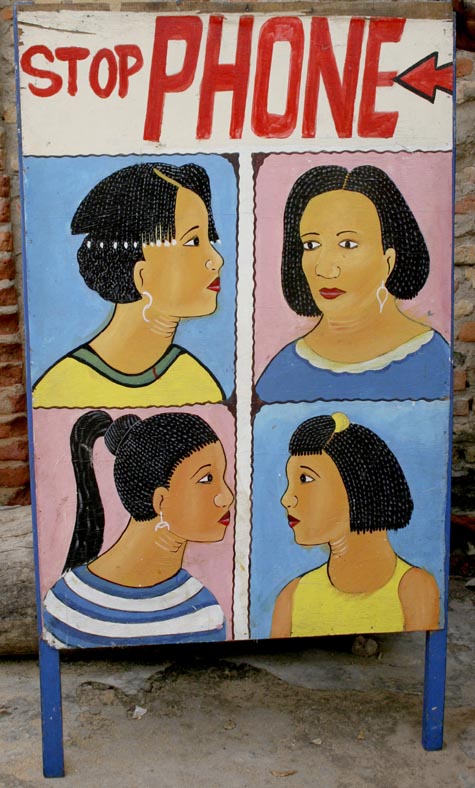
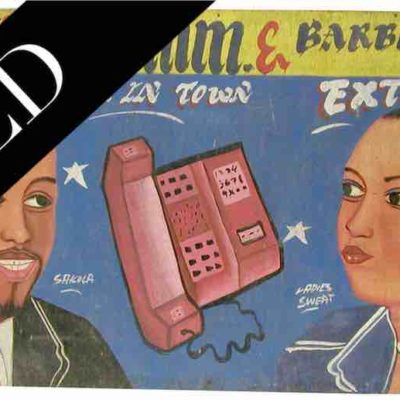
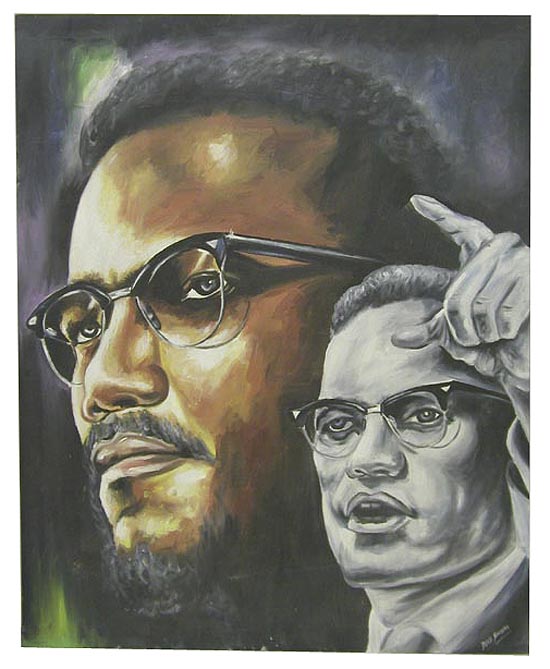
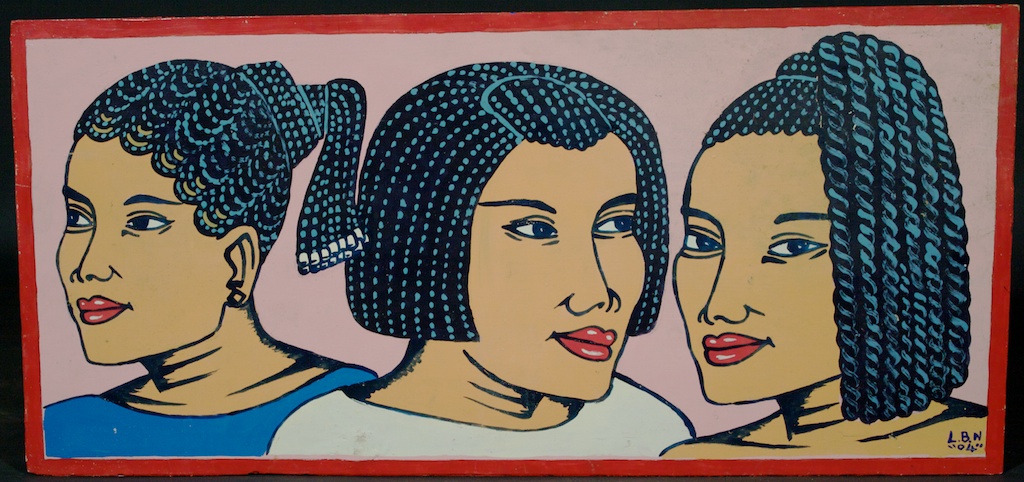
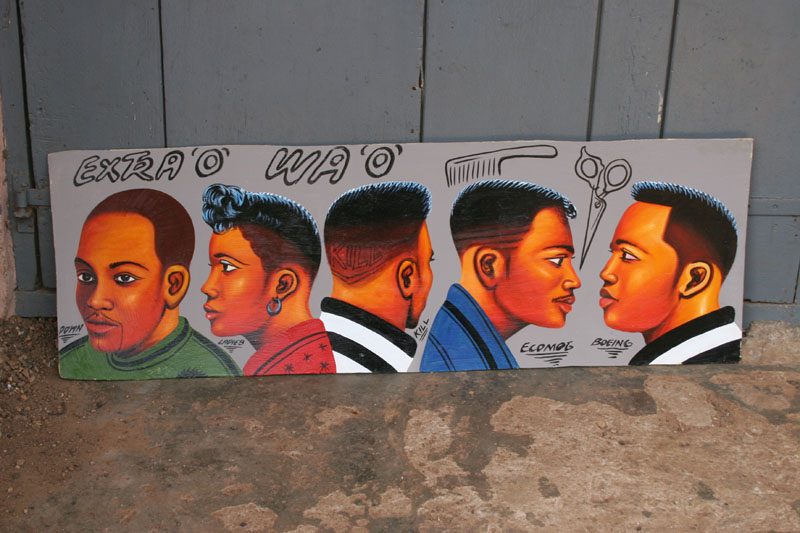
Reviews
There are no reviews yet.